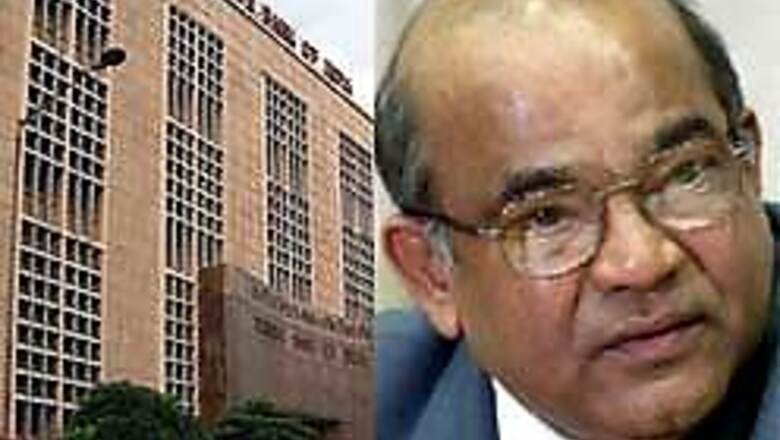
views
Pune: The governor of the Reserve Bank of India (RBI), Y V Reddy, said on Saturday the country's price situation would require greater "sensitivity", and global factors would play an increasing role in determining monetary policy.
Speaking to reporters just two days after raising key official interest rates in a surprise move, Reddy said the central bank would make every effort to contain inflation between 5.0 and 5.5 per cent this year.
"GDP growth has been quite strong ... (there is) definitely increased intensity of economic activity than what was considered at that time," Reddy said referring to April when he surprisingly left rates unchanged.
"The price situation will require greater sensitivity. The effort of the (monetary) policy is to contain inflation in a range of 5.0-5.5 per cent."
The RBI, in a rare move between scheduled reviews, raised interest rates on Thursday by 25 basis points to take the reverse repo rate to 5.75 percent - its highest in four years - to curb accelerating inflation in a fast-growing economy.
India's economy has expanded at an average 8 percent in the past three years, and the central bank expects it to grow at 7.5-8 percent in the year to March 2007.
Most analysts had expected the RBI to raise rates at its next scheduled review on July 25, after the government raised fuel prices this week, triggering concerns that inflation could soon top 5 percent.
The annual inflation rate for the week ended May 27, based on wholesale prices, was at 4.68 per cent. Economists said the fuel price increase would add 0.35 percentage points to inflation immediately, taking it above 5 per cent. Some saw inflation topping 5.5 percent within months.
"The basic stance remains the same and actions will be considered from time to time in response to the relevant developments," Reddy said.
The governor said global monetary policy moves would be given greater significance in the next few months.
"The global factors are being accorded greater weight than before," Reddy said. "We did not want to be out of synch with the global action of the monetary authorities."
The RBI's latest increase came on a day when the European Central Bank raised rates by 25 basis points to 2.75 per cent.
Expectations that the US Fed would continue its rate-tightening spree also likely prompted the central bank to raise rates.
Global interest rates can impact rate-sensitive capital inflows, analysts say. Narrowing interest rate differentials between the United States and India before the central bank's latest move had led to an outflow of foreign portfolio investments, hurting the rupee.
The pull-out by foreign funds saw the rupee drop to a three-year low of 46.57 against the dollar last week, but the currency has rebounded on central bank intervention.
Foreign funds, which had moved nearly $5 billion into Indian equities between January 1 and early May, have pared their holdings to a net $2.4 billion.
Portfolio inflows have been a key support for the rupee against a widening trade deficit caused mainly by high crude oil prices and robust economic activity.




















Comments
0 comment